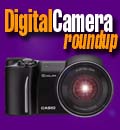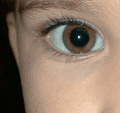 Whether you are a subscriber or regular reader of Digital Camera Magazine or just picked up your first copy, chances are that you're either already using a digital camera or considering buying one. If you're among the former, you'll probably be able to relate to the topic of this column. If you are new to digital cameras, you'll find out what is in store for you. That's because switching to digital is not just business as usual. It means entering a whole new era with a whole new set of rules and things that can go right or very wrong.
Whether you are a subscriber or regular reader of Digital Camera Magazine or just picked up your first copy, chances are that you're either already using a digital camera or considering buying one. If you're among the former, you'll probably be able to relate to the topic of this column. If you are new to digital cameras, you'll find out what is in store for you. That's because switching to digital is not just business as usual. It means entering a whole new era with a whole new set of rules and things that can go right or very wrong.
Switching from film to digital is as different as dropping a letter into a mailbox at the Post Office versus popping off an email on your PC. Both methods of communication have their merits and the US Postal Service still fills my mailbox with tons of junk mail, plus the occasional letter and bill, but the clock is ticking. A good 95% of my own communication is done via email because the technology suits me much better. But I still like getting a real, old-fashioned Christmas card in the mail, or perhaps a letter from a friend.
I've been using digital cameras for about three years now. Five, actually, if I include the old Apple QuickTake, but that doesn't really count. Since the state-of-the-art in digital cameras has advanced so quickly, I have several of them in my house. Placing them side by side on my desk is like looking at the evolution from Neanderthal to modern man. The pioneering QuickTake really wasn't very useful as an actual camera. All you could do was shoot grainy 320 x 240 images. The Olympus DL300 was light-years ahead of that. It could shoot real pictures and I still use it occasionally. The Olympus DL340 was a much refined version of the 300. Next is my beloved Nikon Coolpix 900, the first digital camera I trusted enough to pick it over a film camera for the once-in-a-lifetime pictures I took on a trip to Japan. And then my current pride and joy: the Nikon Coolpix 990 that does everything the 900 did, only faster and better in every respect. It's like comparing the PC you had three years ago with a new one.
I also still have some film cameras. A couple of inexpensive quickshooters that I carry in my travel bag just in case something important pops up and I need to take a few shots without having to worry about all the little things that can render a digital camera inoperable. And my Nikon 8008 SLR because it is a great camera and I have a bunch of lenses for it.
The film cameras, I must admit, still have some advantages. For example, I never have to worry about batteries. Even my big and fully automated 8008 with its motor drive goes so easy on four AA alkalines that I never even bother to check whether they are still good. They seem to last forever. Digital cameras, on the other hand, are power hogs. They've gotten better over the past two years, and there are now some that let me shoot a whole bunch of pictures on a set of simple alkalines, but that is still the exception. In general I assume that any of my digicams will need new (or freshly recharged) batteries before I can trust them. A word about battery chargers here: the first company that builds a fool-proof charger will have me as a lifelong customer. As it is, no matter how hard I try, I always end up putting the wrong batteries into a charger, and the results aren't pretty.
Another great thing with film cameras is that they go "click" when they take a picture, and that they actually take a picture when I press the shutter. Digicams have made some headway in this regard, but far too many still leave you in the dark as to whether you actually took a picture or not. This past weekend my wife wanted to take pictures of me and my four-year-old son horsing around in the pool. I gave her the Coolpix 990 and showed her how it worked. She began shooting but quickly stopped, saying the card was full though she'd only taken six or seven pictures. She had, in fact, taken 63 pictures but since the Coolpix didn't "click" or tell her in another simple way that it had taken a picture, she didn't know. I have to admit that this has happened to me, too. Many times, on many different digicams.
I am also getting increasingly concerned about storage cards. I have perhaps a dozen of them, ranging from some old 4mb cards to a number of Lexars ranging from 16 to 48mb, and a couple of Delkins, one my 64mb "workhorse" and the other a Type II card that packs a whopping 224mb. I had to wrestle that one away from Editor-in-Chief David MacNeill who always keeps the coolest stuff for himself. Problem is that the cards are so small that I live in constant fear of losing them. It's, in fact, the primary reason why I prefer Compact Flash over the even easier-to-lose SmartMedia format. To be honest, I wish my 224mb card had sort of a key ring attachment to it so that I'd always know where it is when I don't use it.
There are so many pros and cons. The other week, for example, I knew I really wanted paper prints of the shots of an event I went to. So I took the film camera, knowing that I'd be holding two full sets of prints in my hand an hour after I dropped them off at the One Hour Photo store. But even while shooting, I really missed the LCD and preview capabilities that are on almost every digicam. How could people ever shoot rolls and rolls of film without having a clue whether the pictures were any good? How did we ever get along without LCDs?
Next weekend I'll take one of my digicams. I really love spending hours in front of my PC, browsing through my pictures, fixing, cropping, and organizing them. Now let's see... Does the old PC I have upstairs have a USB port so that I can use the Coolpix, or is that the one with the SmartMedia card reader so that I'd have to use the Olympus 340?








